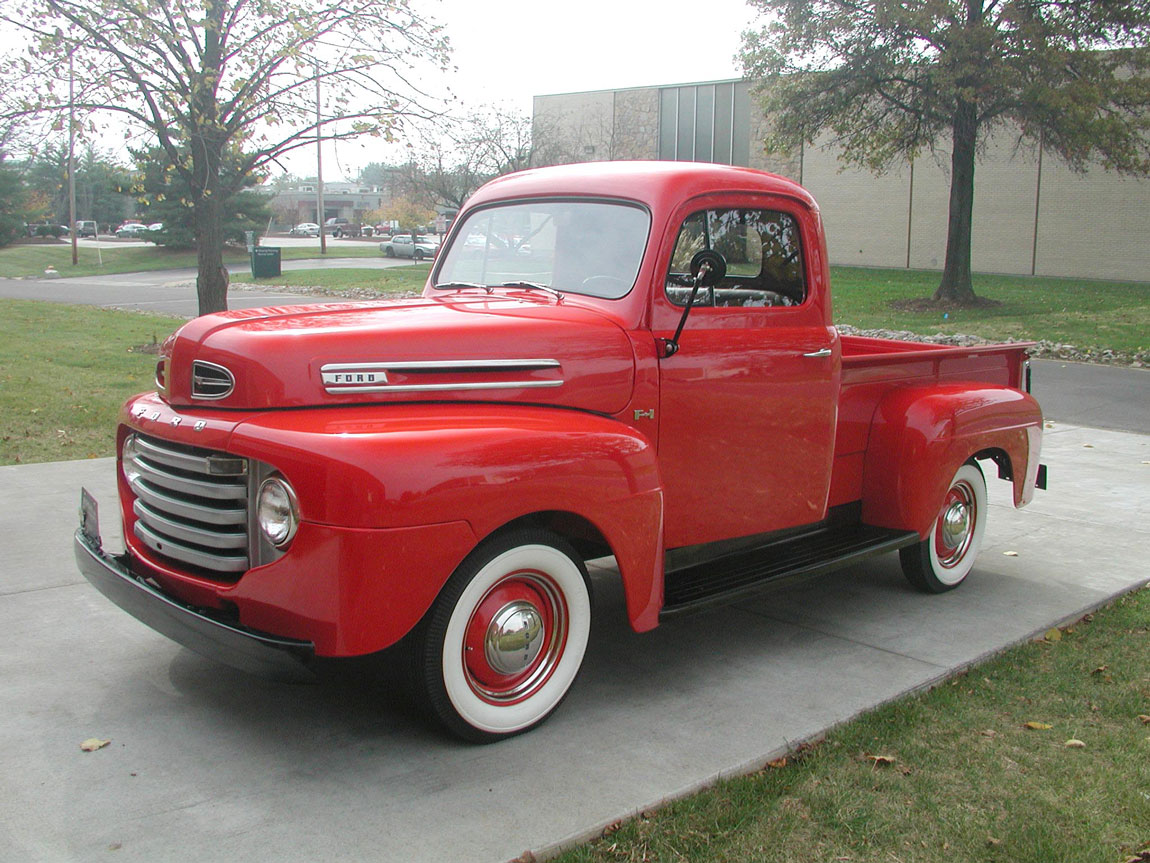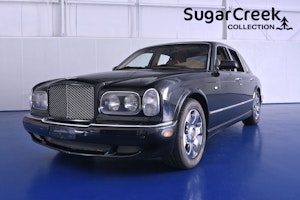Media | Articles
Evolution of the Ford Pickup: America’s Other Sweetheart
The all-new 2015 Ford Mustang dominated car news over the past six months, but in terms of market impact, something else Ford introduced will eventually affect millions more lives than the Mustang: the all-new F-150 pickup truck, the 13th design generation of Ford’s F-series.
The 2015 F-150 is a landmark vehicle for Ford and the industry, the first pickup with an aluminum body. It is also, for now, the highest-volume aluminum vehicle in production, a notable feat in manufacturing. But then, Ford’s F-Series has a history of breaking new ground. Its immense success has consistently demonstrated company’s mastery of the pickup truck segment.
Undoubtedly, fierce competition between Ford and Chevrolet, and later with Dodge/Ram stronger in the mix, pushed progress in all camps. But lasting success with pickups has often demanded separate and unique approaches, which then become the fuel of fierce brand loyalties.
Here are highlights of what helped make Ford pickup owners so loyal over the last seven decades:
Ford introduced the new 1948 F-series pickups as the Bonus-Built models, replacing trucks that had shared more with the car side of the family. The new line included the half-ton F-1 and the F-3 and F3 heavy-duty models. That hierarchy would continue for decades, although the badges would change. Engines included an inline six or the flathead V-8.
Marketplace
Buy and sell classics with confidence
The pickup truck was, at this point, purely a work tool, a utilitarian vehicle with few concessions to comfort. But there was room for style, and the redesigned 1953 Ford F-Series brought plenty of it. The smoother look remains a favorite among customizers today. But this second-gen design’s bigger news was, you might say, the beginning of the taming of the pickup. An automatic transmission joined the option list, and power steering arrived for 1954. You could also get such “luxuries” as an AM radio, dome light and armrests. Powertrain options followed the car side, with the Y-block V-8 replacing the old flathead. The now-familiar naming scheme began here, too: F-100, F-250 and F-350.
An all-new look for 1957 was also much more functional, with a full-width cab, clamshell hood and, starting in 1959, a 4WD system produced in-house. Smooth-side models were called Styleside; the traditional separate-fender bed was called Flareside.
For a 1961 redesign, Ford tried something radical with what it called “unibody” construction. This was not a unitized chassis/body, however, but rather a cab body integrated with the bed. The look was sleeker, but the construction, customers felt, was weaker. Ford dropped it in 1963.
Ford did not follow Chevrolet’s example with independent front suspension until 1965, when it introduced Twin I-Beam suspension. It was a hit with customers, and Ford used a version of this chassis for the next 14 years. New 240 and 300 cu.-in. straight sixes and the big-block FE V-8 joined the line; the 300 six would remain for 30 years. Ford introduced its first Crew Cab this year, but it remained largely a work truck.
Pickups were yet to become popular with urban dwellers, but even ranchers and tradesmen wanted more comfort and convenience. The Camper Special had features that made carrying a camper shell easier. The Ranger top trim line arrived for 1965, and an even plusher Ranger XLT in 1970. Ford had to keep finding new names to match the growing trend toward style and comfort, adding the Explorer badge as 1972’s top trim.
A 1973 refresh made body construction more durable with galvanized steel, and the following year offered Ford’s first extended-cab model, the SuperCab, with room for rear passengers in side-facing jump seats. (Dodge’s similar Club Cab was out the year before.) A somewhat heavier-duty F-150 was added for 1975 and would replace the F-100 as the base model by 1984. The F-series began a long reign as America’s best-selling pickup truck.
The upscaling trend continued with the new Ranger Lariat top trim line. (Lariat is today the middle trim in a six-level model line.) Though the F-series trucks introduced for 1980 were the beefiest yet, they also offered power windows, mirrors and door locks. A diesel engine option, supplied by International, arrived for 1983.
The 1987 F-series saw major changes to improve fuel economy, including a nod to better aerodynamics; fuel injection for even the big old 300-cu.-in. six and 460 V-8; 5-speed overdrive manual transmissions; and the new 4-speed Automatic Overdrive. Yet, Ford also responded to the small niche demand for a “muscle truck” with the SVT Lightning in 1993.
Some Ford pickup aficionados were put off by the “jellybean” aero look of the 1997 trucks, which were all new top to bottom and gained the new overhead-cam V-8s and in 1999 a 6.8-liter V10 option. There seemed to be no end to the diversification that the pickup market demanded. SuperCabs grew a third and then fourth door as the market for pickups-as-passenger vehicles continued to grow. The growth of co-branding was seen in models like the Eddie Bauer, King Ranch and even a Harley-Davidson edition. The SVT Lightning returned with a supercharged V-8.
The demand for ever-stronger pickups for work and towing spurred Ford to split its line in 1998 making the F-250 models and up separate and distinct from the F-150 and calling the new 1999 heavy-duty models “Super Duty.”
For the 11th-gen F-150 in 2004, Ford put the edge back on the bodylines, hinting at the high hoods and huge grilles to come.
The 12th-gen design arrived for 2009 and, two years later, Ford began a revolution in pickup power: a twin-turbo 3.5-liter V-6 with direct fuel injection, which it branded EcoBoost. The new engine offered the power of a 6.0-liter V-8 (365 hp and 420 lb.-ft. torque) but with better fuel economy. It quickly became the most popular choice in the line. Ford muscled-up with the Raptor, a performance model with a 411 hp V-8. Car & Driver called it “the charismatic off-roader Ferrari would build if it built 4×4 pickups.”
Loyal Ford F-series customers have already shown strong demand for the new aluminum-body 2015 models, which dropped an astounding 700 pounds, feature a high-strength steel chassis and offer better dent resistance. Performance, towing capacity and fuel economy are all improved.
Today, you see Ford F-150s everywhere, many being used as everyday vehicles. And the march toward luxury has never ceased: Today’s range-topping F-150 Super Crew Platinum has luxury car features and a luxury car-like price of $51,000; it can approach $60,000 fully optioned.










